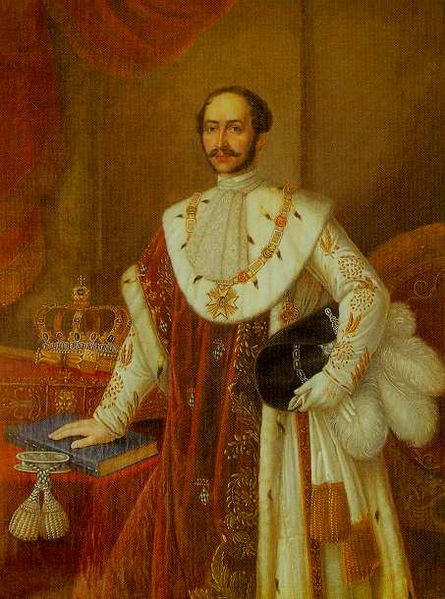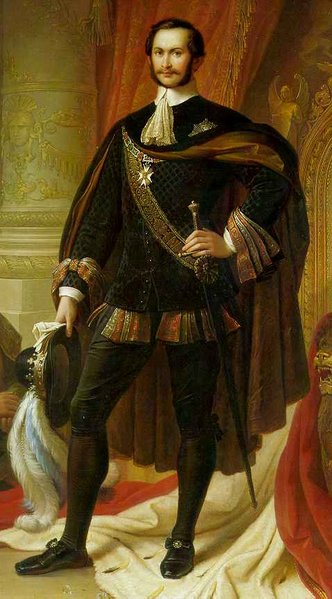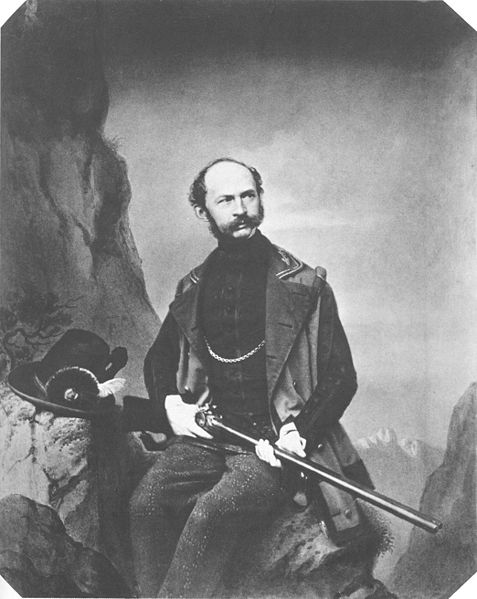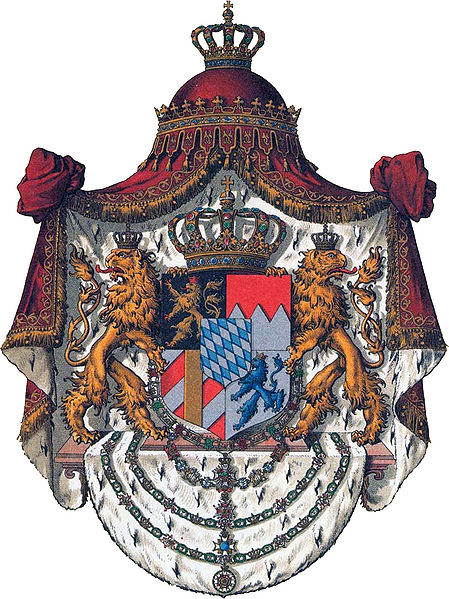<Back to Index>
- Burgomaster of Copenhagen Hans Nansen, 1598
- Poet Alexander Alexandrovich Blok, 1880
- King of Bavaria Maximilian II, 1811
PAGE SPONSOR



Maximilian II of Bavaria (28 November 1811 – 10 March 1864) was king of Bavaria from 1848 until 1864. He was son of Ludwig I of Bavaria and Therese of Saxe - Hildburghausen.
After studying at Göttingen and Berlin and traveling in Germany, Italy and Greece, he was introduced by his father into the council of state (1836). From the start he showed a studious disposition, declaring on one occasion that had he not been born in a royal cradle his choice would have been to become a professor. As crown prince, in the chateau of Hohenschwangau near Füssen, which he had rebuilt with excellent taste, he gathered about him an intimate society of artists and men of learning and devoted his time to scientific and historical study.
When the abdication of Ludwig I (20 March 1848) called him suddenly to the throne, his choice of ministers promised a liberal regime. Although, however, from 1850 onwards his government tended in the direction of absolutism, he refused to become the tool of the clerical reaction, and even incurred the bitter criticism of the Ultramontanes by inviting a number of celebrated men of learning and science (e.g. Geibel, Liebig and Sybel) to Munich, regardless of their religious views.
Maximilian II responded also to the demands of the people for a united German state, by attending the Frankfurt Assembly which intended to create such a state. The progress of the revolution, however, gave him pause. In 1849 an uprising in the Bavarian Palatinate was broken down with the support of Prussian forces. The king strenuously opposed the unionist plans of the Frankfurt Parliament, refused to recognize the imperial constitution devised by it, and assisted Austria in restoring the federal diet and in carrying out the federal execution in Hesse and Holstein. In the aftermath of the failure of the Frankfurt Assembly, Prussia and Austria continued to debate of which monarchy had the inherent right to rule Germany. The dispute between Austria and the Electoral Prince of Hesse - Kassel (or Hesse - Cassel) was used by Austria and its allies (including Bavaria) to promote the isolation of Prussia in German political affairs. This diplomatic insult almost led to war when Austria, Bavaria and other allies moved troops through Bavaria towards Hesse - Kassel in 1850. However, the Prussian army backed down and accepted the principle of dual leadership. This event was known as the Punctation of Olmütz but also known as the "Humiliation of Olmütz" by Prussia. This event solidified the Bavarian kingdom's alliance with Austria against Prussia.
In
his German policy Maximilian was guided by the desire to maintain the
union of the princes, and hoped to attain this as a defence against the
perilous rivalry of Austria and Prussia by the creation of a league of
the
"middle" and small states - the so-called Trias. In 1863, however,
seeing what he thought to be a better way, he supported the project of
reform proposed by Austria at the Furstentag of Frankfurt. Attempts by Prussia to reorganize the loose and un-led German
Confederation, were opposed by Bavaria and Austria while taking part in
its own discussions with Austria and other allies in 1863 in Frankfurt
without Prussia and its allies attending. The failure of this proposal,
and the attitude of Austria towards the Confederation and in the Schleswig - Holstein Question,
disillusioned him; but before he could deal with the new situation
created by the outbreak of the war with Denmark he died suddenly at
Munich, on 10 March 1864. He is buried in the Theatinerkirche in Munich.
Maximilian offered Paul Heyse and other writers from North Germany large stipends. Hans Christian Andersen visited "King Max" (as he called him) in his castle Starnberg, and wrote of him as a young, highly amiable man. The King, having read his novels and fairy tales, let Andersen know that he was deeply impressed by The Improvisator, En Digters Bazar, The Little Mermaid and Paradisets Have. During the visit Andersen also read The Ugly Duckling. Later Andersen visited the King at the Hohenschwangau castle.
King Maximilian II was the principal of the Maximilianstrasse and the Bavarian National Museum in Munich. Compared to his father Maximilian preferred a new architectural style with strong reference to the Gothic Revival architecture which would combine the best features of historical models combined with then modern building technology. The hiking path in Upper Bavaria called Maximiliansweg is named after him, as he made a longer hike in the Bavaria alps in the summer of 1858.
Maximilian
was a man of amiable qualities and of intellectual attainments far
above the average, but as a king he was hampered by constant ill health,
which compelled him to be often abroad, and when at home to live much
in the country. By his wife, Marie Friederike Franziska Hedwig, daughter of Prince William of Prussia, whom he married in 1842, he had two sons, Ludwig II of Bavaria and Otto of Bavaria, both of whom became kings.
